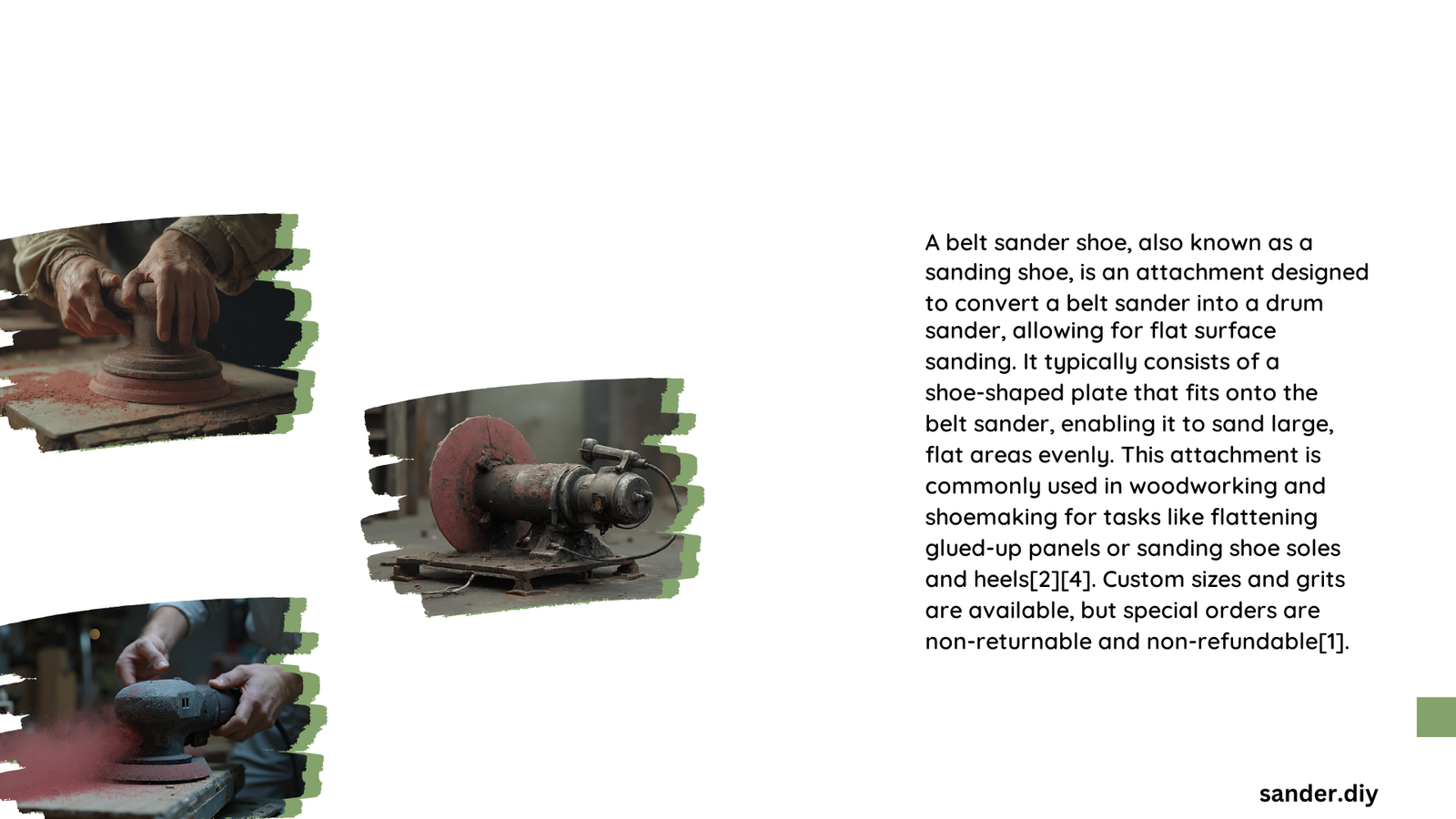A belt sander shoe is a critical component in woodworking machinery that provides stability, pressure control, and precision during sanding operations. These specialized shoes, typically constructed from durable metals like steel or aluminum, play a crucial role in maintaining consistent contact between the sanding belt and workpiece, ensuring smooth and uniform surface finishing across various materials and applications.
What Are the Essential Materials for Belt Sander Shoes?
Belt sander shoes are engineered with precision and durability in mind. The primary materials used include:
| Material | Characteristics | Best Used For |
|---|---|---|
| Steel | High durability, robust | Heavy-duty industrial applications |
| Aluminum | Lightweight, corrosion-resistant | Precision woodworking |
| Composite Materials | Flexible, specialized performance | Unique sanding requirements |
How Do Belt Sander Shoes Impact Sanding Performance?
Belt sander shoes serve multiple critical functions in woodworking:
- Pressure Regulation
- Maintain consistent contact with workpiece
- Prevent uneven sanding surfaces
-
Control material removal rate
-
Stability Enhancement
- Reduce vibration during sanding
- Ensure precise movement across surfaces
- Minimize workpiece damage
What Factors Determine Belt Sander Shoe Selection?

When choosing a belt sander shoe, consider these key parameters:
- Dimensional Compatibility
- Width matching sanding belt
- Height accommodating workpiece
-
Tolerance within .002 inches
-
Material Hardness
- Resistance to wear
- Ability to withstand repeated pressure
- Thermal stability
How to Replace a Belt Sander Shoe?
Replacement process requires careful attention:
Tools Required
- Wrench set
- Allen keys
- Dial indicator
- Replacement shoe
Step-by-Step Replacement
- Lower feed bed
- Open thickness setting
- Remove existing shoe
- Install new shoe
- Calibrate and adjust alignment
What Are Common Challenges in Belt Sander Shoe Maintenance?
Potential issues include:
- Compatibility with specific sander models
- Precise measurement requirements
- Potential alignment difficulties
Cost Considerations
Price Range:
– Basic shoes: $20 – $50
– Professional-grade: $50 – $100
– Industrial models: $100+
Expert Tips for Optimal Belt Sander Shoe Performance
- Regular inspection for wear
- Precise calibration
- Use manufacturer-recommended replacements
- Clean and lubricate mounting points
Recommended Maintenance Schedule
| Frequency | Action |
|---|---|
| Monthly | Visual inspection |
| Quarterly | Detailed alignment check |
| Annually | Complete shoe replacement |
Conclusion
Understanding belt sander shoes’ nuanced role helps woodworkers maintain equipment efficiency, ensuring superior sanding results across diverse projects.
